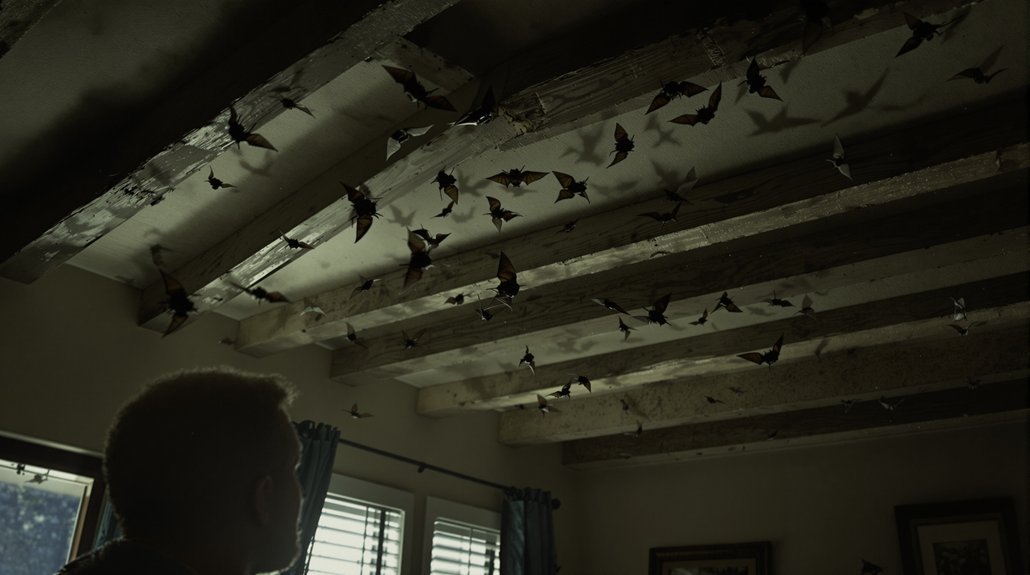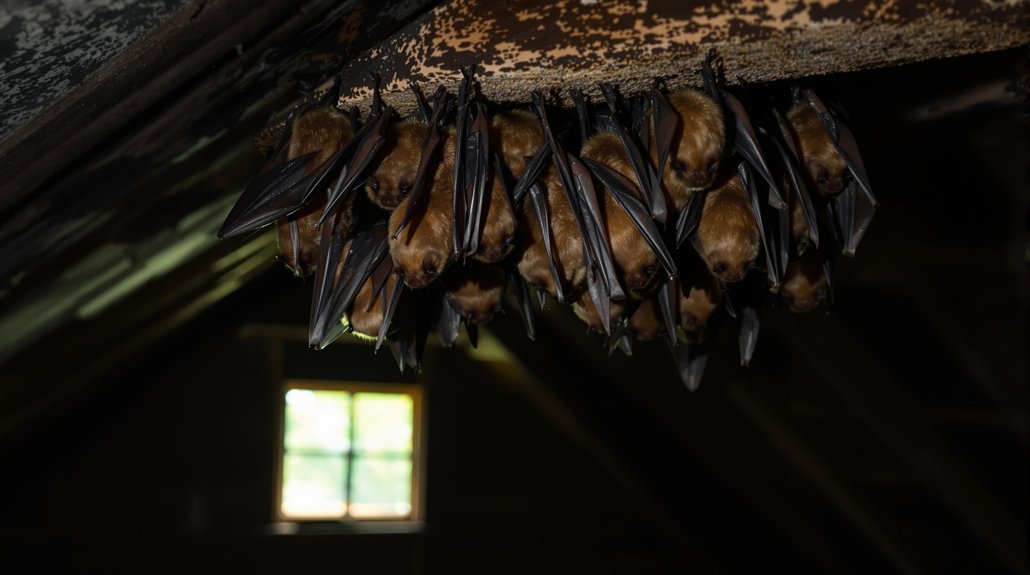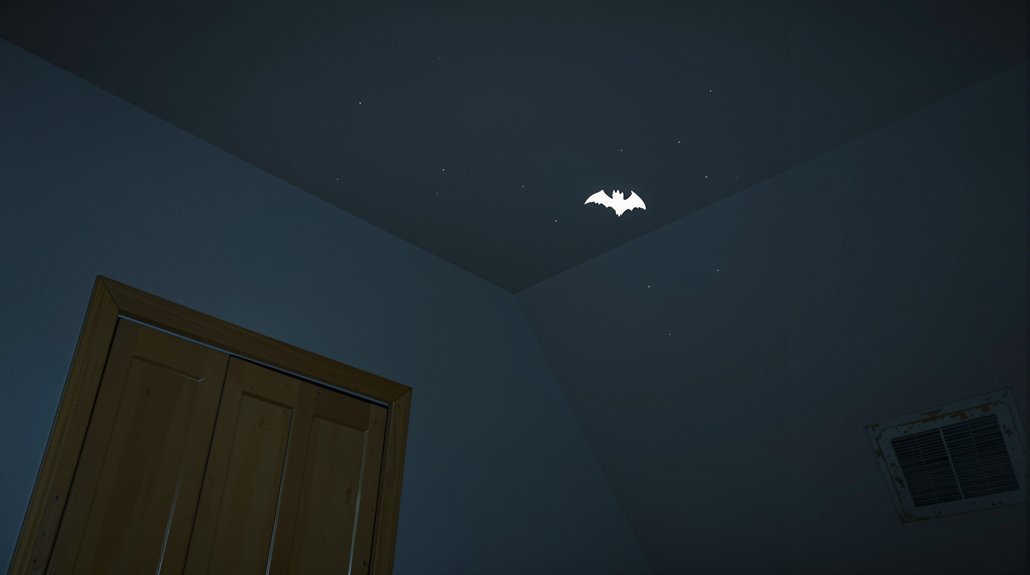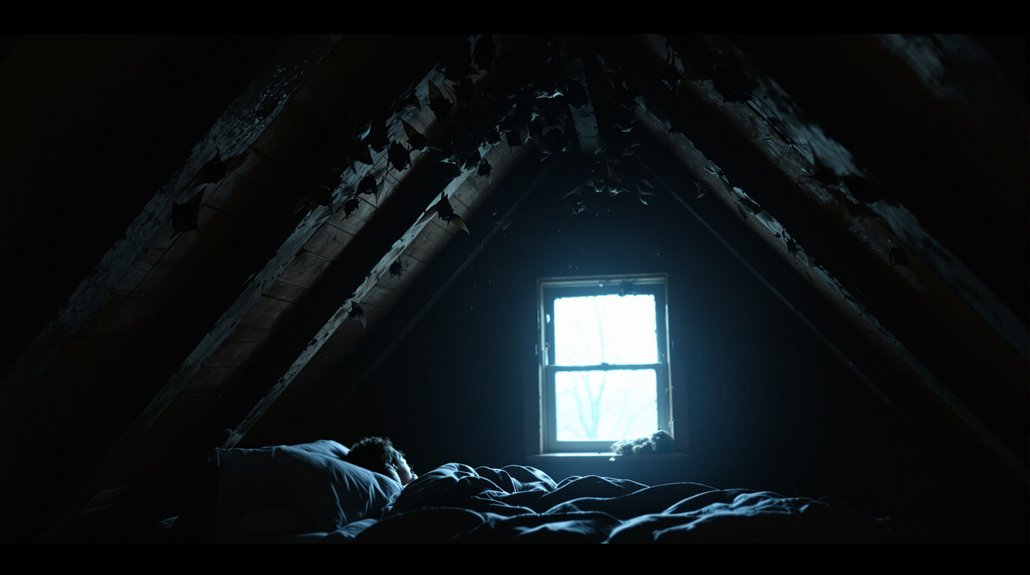Sleeping in a house with bats in Des Moines can be risky. Bats may carry rabies and their droppings can cause health issues like histoplasmosis. Signs of infestation include droppings, noises in the walls, and unusual smells. It is important to take precautions, such as sealing entry points and keeping areas clean. If bat activity increases, it is best to call a professional for help. More information on bats and safety can be found through further exploration.
Key Article Highlights
- Bats can carry rabies, posing a health risk if they come into contact with humans or pets.
- Bat droppings can lead to histoplasmosis, a lung infection, if inhaled.
- Signs of bat infestations include droppings, noises in walls, and unusual odors.
- It’s crucial to address bat presence promptly to minimize health risks and prevent larger infestations.
- Consulting professionals for safe removal and exclusion is recommended to ensure a safe living environment.
Understanding Bats and Their Role in the Ecosystem

Why are bats often misunderstood? Many people see bats as scary creatures. This view overlooks their important role in nature. Bats help with bat conservation and maintain ecosystem balance. They eat insects, reducing pests that harm crops and spread disease. By controlling insect populations, bats contribute to healthier environments. Their guano, or bat droppings, also enriches soil, promoting plant growth. This supports various animal species and provides food for many. Understanding bats is essential for their protection and the health of ecosystems. Educating communities about their benefits can help reduce fear. Additionally, proper damage management and exclusion techniques are crucial to coexistence. This knowledge encourages bat conservation efforts, ensuring these crucial animals continue to thrive. By appreciating bats, people can support a balanced and healthy ecosystem.
Common Species of Bats in Des Moines

Bats in Des Moines play an important role in the local ecosystem, and several species are commonly found in the area. These bats are known for their nocturnal behavior, hunting insects during the night.
| Species | Characteristics |
|---|---|
| Little Brown Bat | Small, brown fur |
| Big Brown Bat | Larger, dark fur |
| Eastern Red Bat | Reddish fur, tree roosts |
| Hoary Bat | Large, white-tipped fur |
| Silver-Haired Bat | Dark fur, long ears |
These species participate in bat migration, moving to warmer areas as seasons change. Understanding these common bats helps residents appreciate their presence and the benefits they provide.
Health Risks Associated With Bats

What health risks might arise from having bats in a home? Bats can pose significant health concerns. One major issue is the potential for rabies transmission. Bats are known carriers of the rabies virus, which can be deadly if contracted.
Additionally, bat droppings, or guano, can lead to health problems. The following risks are associated with bats:
- Rabies Risk: Bats can transmit rabies through bites or scratches.
- Histoplasmosis: This lung infection can occur from inhaling spores from bat droppings.
- Allergies: Bat droppings can cause allergic reactions in some individuals.
It is crucial to address bat infestations promptly to minimize these health risks in Des Moines homes.
Signs of a Bat Infestation
Recognizing the signs of a bat infestation is important for maintaining a safe home environment. Homeowners should watch for certain indicators of bat behavior. Common signs include droppings, which resemble mouse droppings but are often larger and can be found near entry points. Noises in the attic or walls, especially at dusk, may also suggest bats are present. Additionally, unusual odors from bat urine can be detected. Acoustic monitoring can help identify bat activity by capturing their sounds. If these signs are noted, it is essential to investigate further. Ignoring these indicators can lead to larger infestations and potential health risks. Awareness is the first step in addressing and managing a bat issue effectively.
Safe Practices for Living With Bats
While having bats in a home can be concerning, there are safe practices that can help manage the situation. Understanding bat migration and their dietary habits is important. Bats are beneficial as they control insect populations. To live safely with bats, homeowners can follow these practices:
- Seal entry points: Check for gaps in roofs, walls, and windows. Close any openings to prevent bats from entering living spaces.
- Maintain cleanliness: Regularly clean areas where bats roost. This reduces the risk of disease transmission.
- Limit outdoor lighting: Bright lights attract insects, which in turn attract bats. Less light can help keep bats away from homes.
When to Call a Professional
Homeowners should consider calling a professional if they notice an increase in bat activity or if bats are present in living areas. This is vital for health and safety reasons. Professionals can provide effective bat removal tips to address the situation safely. They have the training and tools to remove bats without harming them or the home. Additionally, they can offer bat exclusion strategies to prevent future issues. If bats are found in areas where people sleep or gather, it is essential to act quickly. Ignoring the problem may lead to more serious health risks. A professional can assess the situation and guarantee that the home is bat-free and secure. Taking action promptly can protect both the home and its occupants.
Preventing Bats From Entering Your Home
Preventing bats from entering a home requires careful attention to potential entry points. Homeowners can take specific steps for effective bat exclusion. First, they should inspect the exterior for gaps and holes, especially around roofs and vents. Second, sealing these openings is essential to stop bats from finding access. Third, regular guano cleanup is necessary to prevent attracting bats and to maintain a healthy environment.

